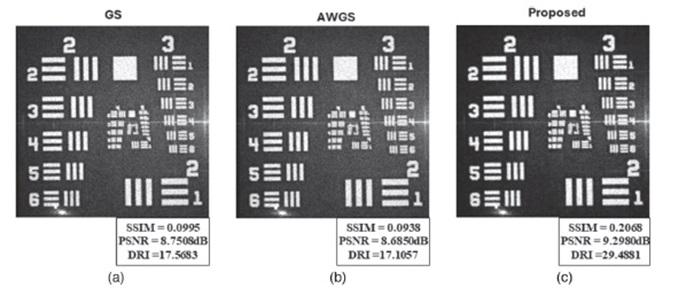
Submitted by Sara Minaie on Sat, 01/03/2025 - 15:48
Adaptive Contrast Enhancement in Computer-Generated Holography Using Nonlinear Optimization
This study introduces an advanced nonlinear exponential merit function to enhance the contrast and dynamic range of computer-generated holography (CGH). By integrating adaptive energy redistribution into the Gerchberg–Saxton (GS) algorithm, the method selectively suppresses noise in visually sensitive regions while maintaining overall luminance. The experimental results demonstrate a 6.25% improvement in peak signal-to-noise ratio (PSNR) and a 67.85% increase in dynamic range index (DRI), leading to sharper and more vivid holographic reconstructions. The study also explores the impact of nonlinear intensity weighting and adaptive dynamic range shifts, offering a balanced approach to contrast enhancement and noise suppression. These findings provide valuable insights for the optimization of holographic display technologies, with potential applications in augmented reality (AR), virtual reality (VR), head-up displays (HUDs), and high-resolution holographic imaging systems.
You can access the full article here: https://doi.org/10.1364/AO.545144.

